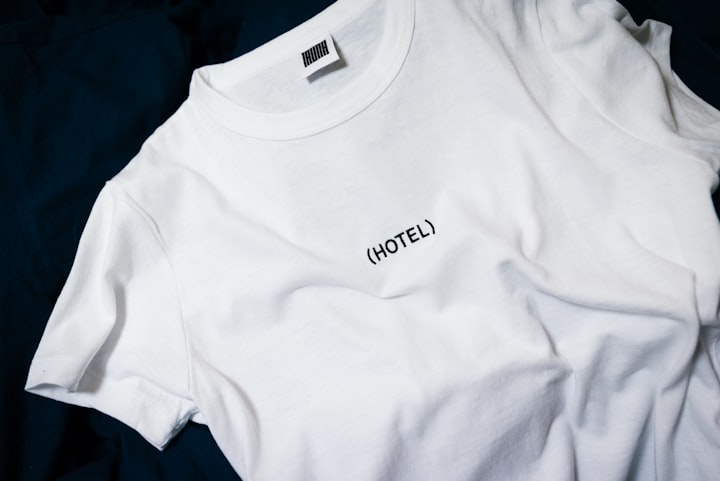Introduction to Garment Printing: Methods and Techniques
Unveiling the Methods and Techniques Behind Stunning Apparel Designs

What is Garment Printing?
Garment printing is the process of applying ink or other forms of decoration onto a piece of clothing, such as a t-shirt, hoodie, or sweatshirt. This technique can be used to create custom designs, logos, and other graphics on clothing. Garment printing can be done using a variety of methods, including screen printing, direct-to-garment printing, heat transfer, and vinyl printing. Each method offers its own advantages and disadvantages, and the choice of method depends on factors such as the complexity of the design, the number of garments being printed, and the type of fabric being used. Garment printing has become increasingly popular in recent years as a way to create custom apparel for events, businesses, organizations, and personal use.
What are screen printing techniques on fabric?
Screen printing is a popular method of printing on fabric, particularly for large batches of t-shirts or other garments. Here are the basic steps involved in the screen printing process:
Design Creation: A design is created on a computer or by hand and then separated into its individual color components.
Screen Preparation: A screen is coated with a light-sensitive emulsion, and the separated color components of the design are transferred onto the screen using a film positive.
Screen Exposure: The screen is exposed to UV light, which hardens the emulsion except where the design has been transferred, creating a stencil.
Ink Application: Ink is placed onto the stencil, and a squeegee is used to force the ink through the stencil and onto the fabric.
Ink Curing: The printed fabric is then sent through a dryer or oven to cure the ink and ensure it adheres properly to the fabric.
Screen printing can be done manually or using automated machines. It is a versatile technique that can produce vibrant and long-lasting prints on a wide range of fabrics, including cotton, polyester, and blends. It is also commonly used to print on other materials such as paper, plastics, and metals. The process can be customized with different inks, meshes, and stencil techniques to achieve a variety of effects and textures.
What is digital printing on fabric?
Digital printing on fabric is a method of printing designs directly onto fabric using computer-controlled inkjet printers. Unlike traditional methods such as screen printing, which require the creation of separate stencils for each color, digital printing allows for the printing of full-color, high-resolution designs in a single pass. The process involves creating a digital file of the design, which is then printed onto the fabric using specialized inks that are formulated to bond with the fabric fibers. The ink is applied in tiny droplets, which combine to create the desired colors and patterns.
What are the types of digital printing on fabric?
Digital printing offers several advantages over traditional printing methods, such as the ability to print complex designs and photographic images with high precision and detail, as well as the ability to print on demand and reduce waste. Here are some of the types of digital printing on fabric:
- Direct-to-Garment (DTG) Printing:
DTG printing involves printing the design directly onto the fabric using a specialized inkjet printer. It is best suited for small batches or single-piece orders, and is particularly popular for printing on cotton or cotton-blend fabrics.
Read Also : The Future of Garment Printing: Exploring DTF Technology
- Dye Sublimation Printing:
Dye sublimation printing involves printing the design onto a transfer paper, which is then heat-pressed onto the fabric, causing the ink to sublimate and become a part of the fabric fibers. This method is ideal for printing on polyester or other synthetic fabrics.
- Pigment Printing:
Pigment printing involves printing the design onto the fabric using a special pigment ink that sits on top of the fabric fibers, rather than penetrating them. This method is best suited for printing on natural or blended fabrics and produces a soft, natural-looking print.
- Reactive Printing:
Reactive printing involves printing the design onto the fabric using special reactive dyes that bond with the fabric fibers, creating a permanent and durable print. This method is ideal for printing on natural fibers such as cotton, linen, and silk.
Frequently Asked Questions
What are the 8 types of printing methods?
There are many different types of printing methods, each with its own advantages and disadvantages depending on the specific application. Here are eight of the most common types of printing methods:
Offset Printing: This is a popular commercial printing method that involves transferring ink from a metal plate to a rubber blanket and then onto the paper or other printing substrate.
Digital Printing: This method involves printing digital images directly onto a substrate, such as paper, fabric, or plastic, using inkjet or laser printers.
Screen Printing: This is a process in which ink is forced through a stencil or mesh screen onto the printing substrate.
Flexography: This is a type of rotary printing in which ink is transferred from a raised printing plate to the substrate.
Gravure: In this printing method, the design is etched or engraved onto a metal plate, which is then used to transfer ink to the substrate.
Letterpress: This is a traditional printing method in which ink is applied to raised type or images, which are then pressed onto the substrate.
Embossing: This is a process that involves creating a raised design on the substrate by pressing it between two dies.
Thermography: In this printing method, a special powder is added to the ink, which causes it to rise and create a raised texture on the substrate when heated.
Conclusion:
Whether you're looking to print a single t-shirt or produce a large batch of custom apparel, understanding the various methods and techniques of garment printing can help you achieve the best results. By exploring the different options available, you can choose the method that best fits your needs, budget, and desired outcome.
About the Creator
Garment Printing
Get Custom Printing with ease. Design and Personalized your own garments with our online Custom builder for different events and celebrations.
We have some categories like.
1. Work Wear.
2. T-Shirt.
3. Sports Wear.
4. Health Wear.
and so on..






Comments
There are no comments for this story
Be the first to respond and start the conversation.